book now
Visit The Golden Circle and discover Iceland’s gems.
introduction
Iceland’s Golden Circle is a popular tourist route that takes visitors through some of the country’s most stunning natural landscapes and historic sites. From bubbling geothermal pools and towering waterfalls to ancient Viking meeting places and geological wonders.
In this article, we’ll take a closer look at the three main stops along the Golden Circle route: Thingvellir National Park, the Geysir Geothermal Area, and Gullfoss Waterfall. We’ll also explore some of the other attractions that can be found along the route and provide practical tips for planning your own Golden Circle adventure. Whether you’re a first-time visitor to Iceland or a seasoned traveler, the Golden Circle is a must-see destination that’s sure to leave you in awe of the power and beauty of nature.
Thingvellir National Park
Thingvellir National Park is one of Iceland’s most important historical and geological sites. Located about 40 kilometers (25 miles) east of Reykjavik, the park is situated in a rift valley that marks the boundary between the North American and Eurasian tectonic plates. This makes it an ideal location for studying geological phenomena such as volcanic activity, earthquakes, and continental drift.
In addition to its geological significance, Thingvellir is also an important historical site. It was here that Iceland’s first parliament, the Althingi, was established in 930 AD, making it one of the world’s oldest functioning parliaments. The site was chosen for its central location and neutral ground, and for the fact that the law speaker was able to recite the law from memory in front of all assembled, ensuring that the laws were accessible to everyone.
Today, visitors to Thingvellir can explore the park’s rugged landscapes and learn more about its fascinating history. Highlights of a visit to Thingvellir include:
- The Silfra fissure: This is a fissure between the North American and Eurasian tectonic plates, which is filled with crystal-clear water that is popular with divers and snorkelers.
- Thingvallavatn Lake: The largest natural lake in Iceland, it is located within the national park and offers stunning views and opportunities for fishing and boating.
- Althingi: Visitors can explore the remains of the ancient meeting place, including the site where the law speaker would recite the law.
Geysir Geothermal Area
The Geysir Geothermal Area is located in the Haukadalur Valley, about 10 kilometers (6 miles) north of Gullfoss Waterfall. It is home to a variety of hot springs, mud pools, and geysers, including the famous Strokkur geyser, which erupts every few minutes and shoots a column of water up to 30 meters (100 feet) into the air.
The area’s geothermal activity is caused by the same tectonic forces that created Thingvellir National Park, and it offers a fascinating glimpse into Iceland’s volcanic landscape. Visitors to the Geysir Geothermal Area can explore the various geothermal features and learn more about the science behind them.
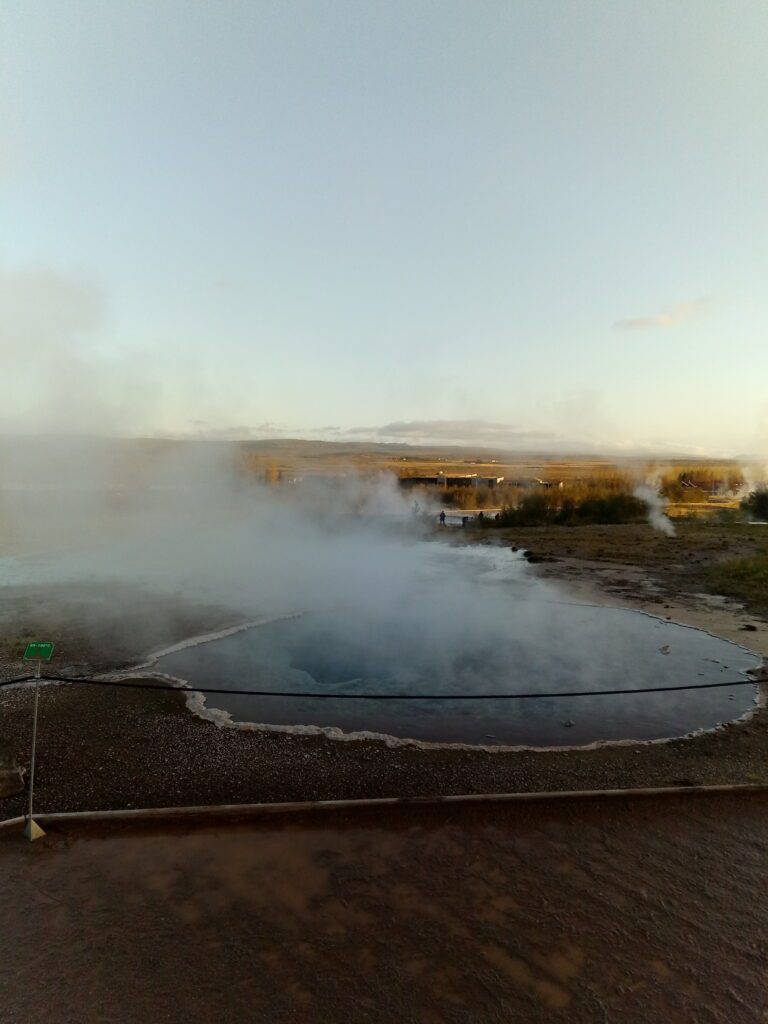
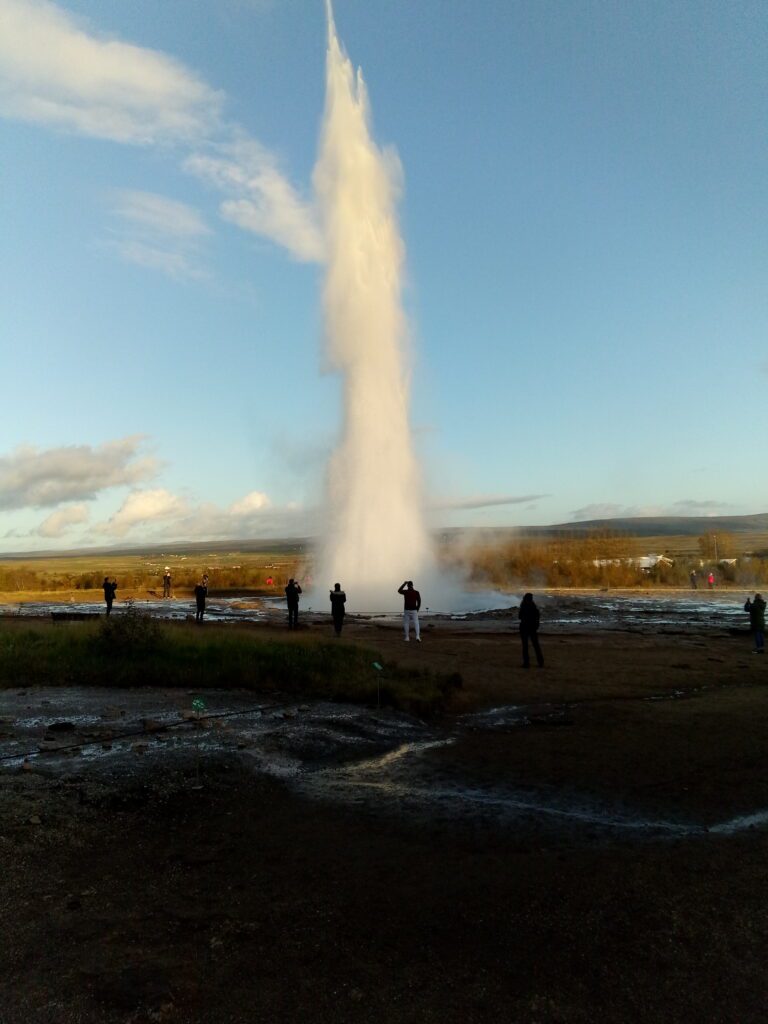

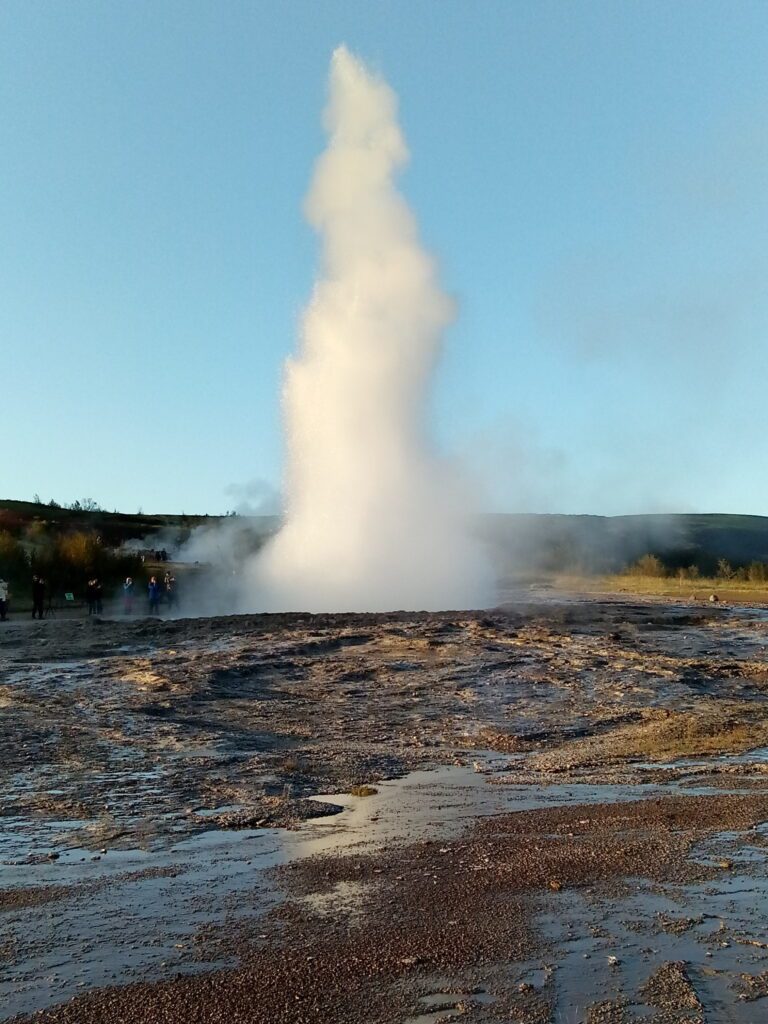

Highlights of a visit to the Geysir Geothermal Area include:
- Strokkur geyser: This is the main attraction of the area, and visitors can watch it erupt from a safe distance on a series of viewing platforms.
- The Great Geysir: While this geyser is no longer active, it gives visitors a sense of the power and size of the geysers in the area.
- The hot springs and mud pools: Visitors can walk along the boardwalks and see the colorful hot springs and bubbling mud pools up close.
- The Geysir Center: This visitor center offers information about the geothermal activity in the area, as well as a restaurant and gift shop.
A visit to the Geysir Geothermal Area is a unique and memorable experience. Its landscapes and geothermal activity make it a must-see stop on any Golden Circle itinerary.
Gullfoss Waterfall
Gullfoss, or “Golden Falls,” is one of Iceland’s most spectacular waterfalls and a highlight of any visit to the Golden Circle. Located on the Hvita River, the waterfall is made up of two tiers of cascading water that drop a total of 32 meters (105 feet) into a narrow canyon below.
Legend has it that a farmer’s daughter, Sigríður Tómasdóttir, fought to protect the waterfall from being exploited for hydroelectric power in the early 20th century. She even threatened to throw herself into the falls in protest, and her efforts helped to preserve Gullfoss for future generations.
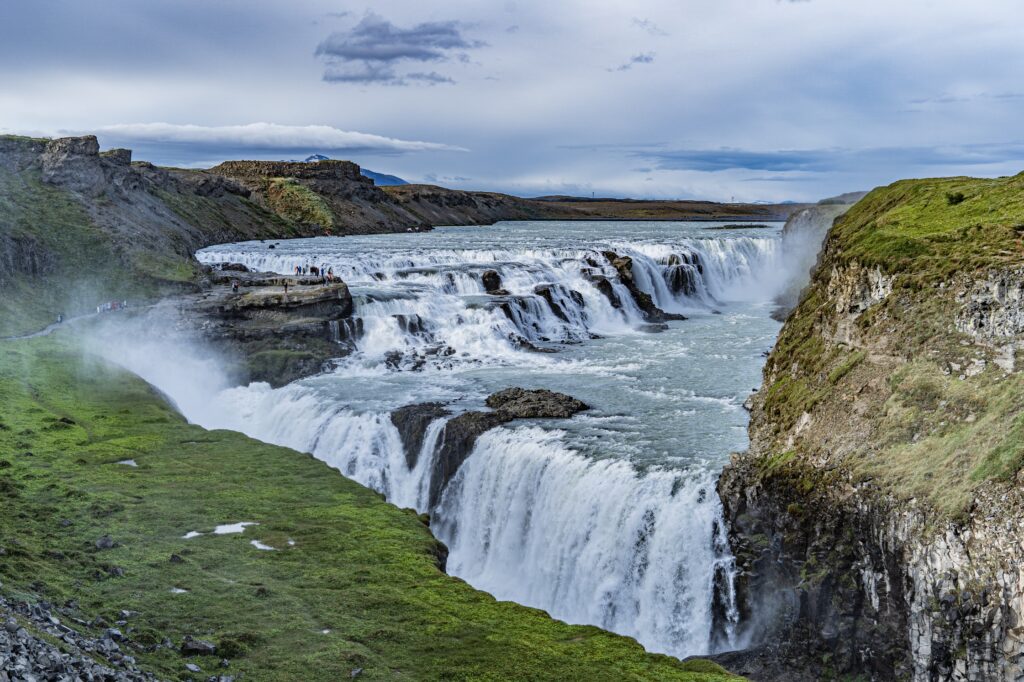

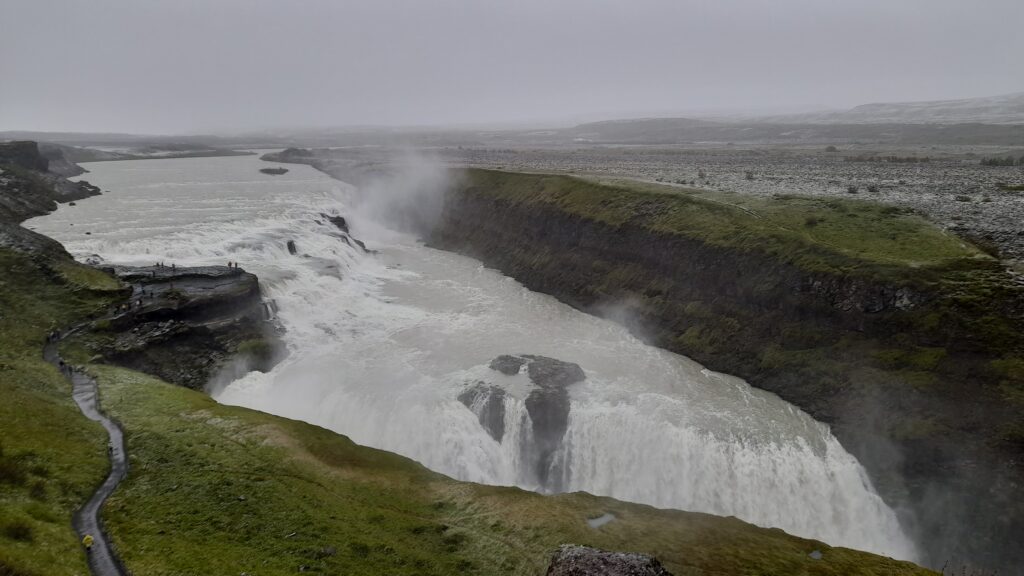

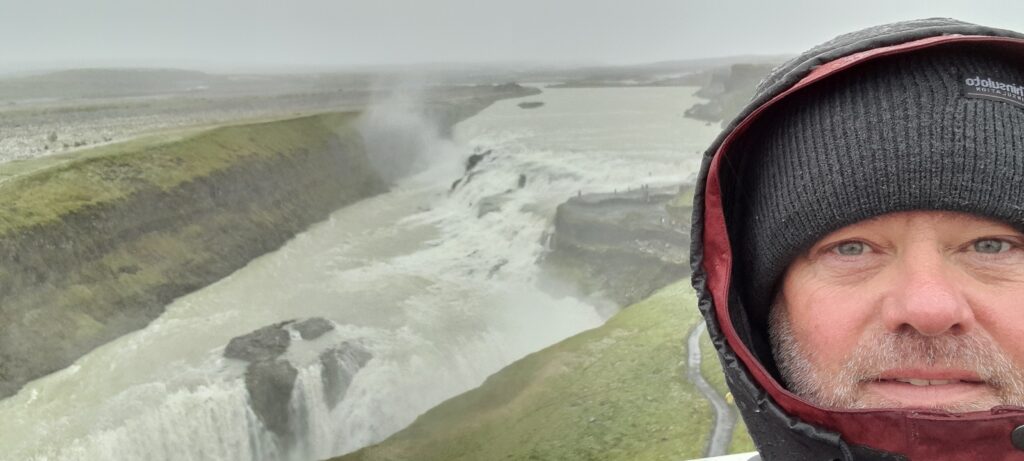

Today, visitors to Gullfoss can marvel at the power and beauty of the waterfall and explore the surrounding area. Highlights of a visit to Gullfoss include:
- The viewing platforms: Visitors can get up close to the falls on a series of platforms that offer stunning views of the cascading water.
- The hiking trails: Several hiking trails lead from the viewing platforms to other parts of the canyon and offer additional opportunities for exploration.
- The Gullfoss Cafe: Located near the falls, the cafe offers a range of food and drink options and is a great place to take a break and soak in the scenery.
Gullfoss Waterfall is a must-do on any Golden Circle itinerary. Its natural beauty and rich history make it a truly unforgettable destination.
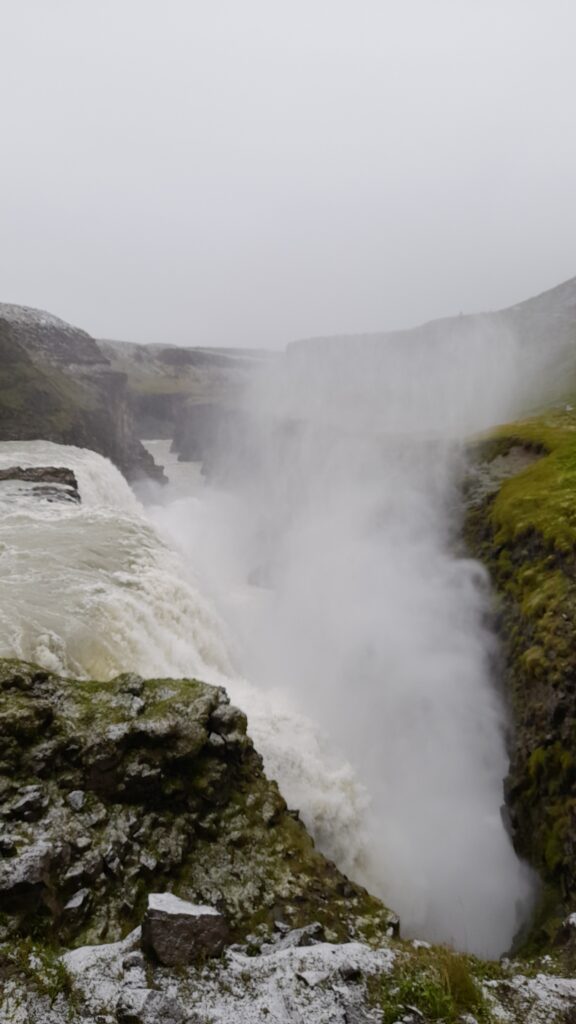

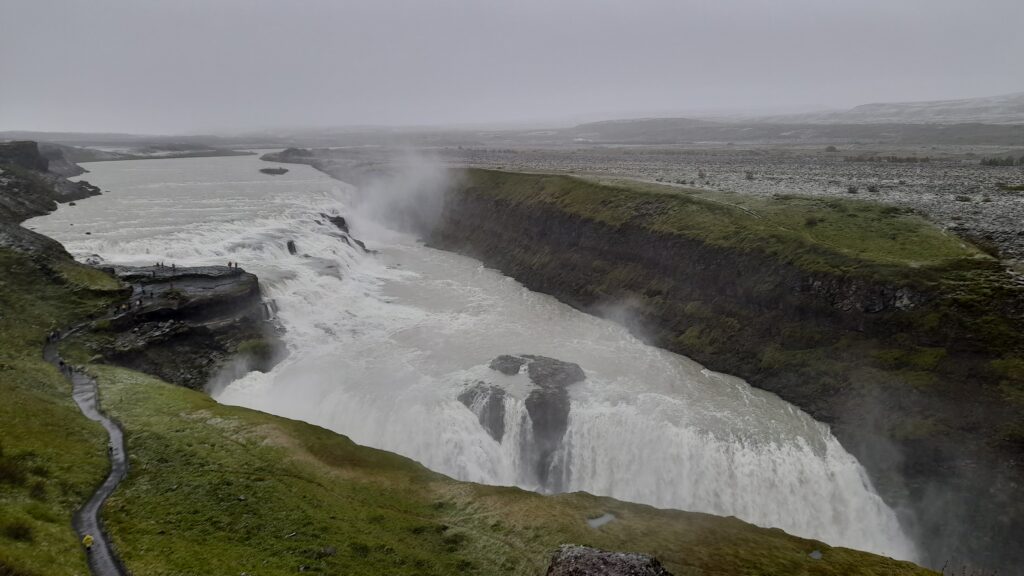

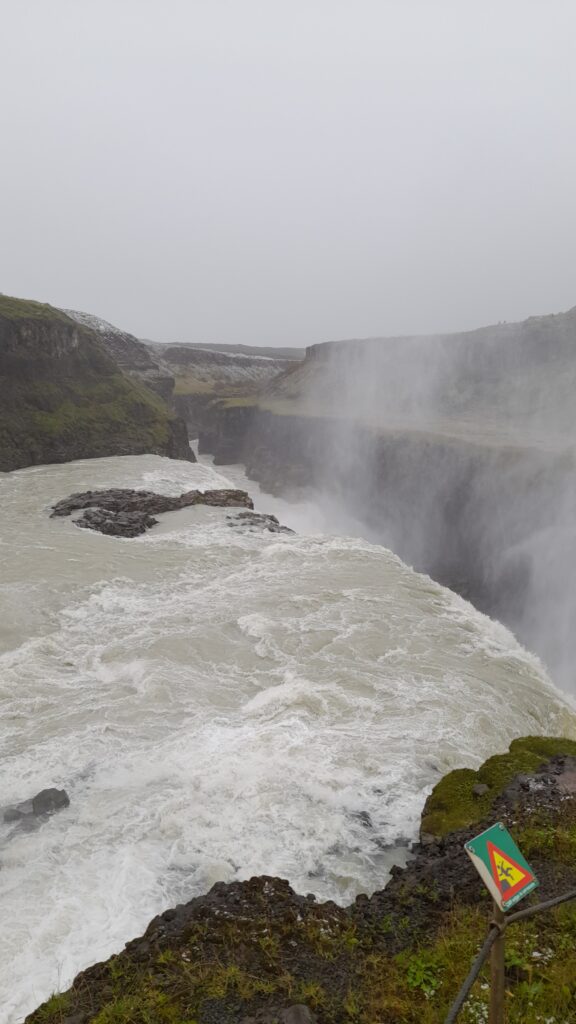

Additional stops along the Golden Circle
While Thingvellir National Park, Gullfoss Waterfall, and the Geysir Geothermal Area are the main attractions along the Golden Circle, there are several other stops worth exploring as well. Some of these include:
- Faxi Waterfall: This smaller waterfall is located about 12 kilometers (7 miles) from Gullfoss and is known for its peaceful atmosphere and scenic beauty.
- Kerið Crater: This volcanic crater is located about 11 kilometers (7 miles) north of Selfoss and is filled with blue-green water, making it a popular spot for photography and nature lovers.
- Skálholt Cathedral: This historic cathedral was once the center of religious power in Iceland and is located about 18 kilometers (11 miles) south of Thingvellir.
- Friðheimar Greenhouse: This unique attraction is a working greenhouse that specializes in growing tomatoes using geothermal energy. Visitors can take a tour of the greenhouse and sample some of the delicious tomato-based products.
- Secret Lagoon: This natural hot spring is located near the village of Flúðir and offers a relaxing and authentic bathing experience.
The Golden Circle offers a range of attractions for visitors to explore, from stunning natural landscapes to fascinating historical sites and unique cultural experiences. By taking the time to explore some of the additional stops along the route, visitors can gain a deeper appreciation for the beauty and diversity of Iceland’s Golden Circle.
Practical information for visiting the Golden Circle
Getting There:
The Golden Circle is easily accessible from Reykjavik, with most visitors choosing to rent a car or join a guided tour. The route is well signposted and easy to navigate, making it a popular day trip from the capital.
When to Visit:
The Golden Circle is accessible year-round, but the best time to visit is during the summer months (June-August) when the weather is milder and the daylight hours are longer. However, this is also the busiest time of year, so visitors should be prepared for crowds at popular attractions.
In the winter months (December-February), the Golden Circle can be covered in snow, making for a picturesque winter wonderland. However, visitors should be aware of potentially hazardous driving conditions and shorter daylight hours.
What to Wear:
Visitors to the Golden Circle should dress in layers and be prepared for a range of weather conditions. Even in the summer months, temperatures can be cool, and rain is always a possibility. Sturdy, waterproof footwear is also recommended for exploring various attractions.
Where to Stay:
While some visitors choose to visit the Golden Circle as a day trip from Reykjavik, there are also several accommodation options in the area for those who want to spend more time exploring. Selfoss and Laugarvatn are both popular choices for visitors, offering a range of hotels, guesthouses, and holiday rentals.
Booking.comConclusion
The Golden Circle is undoubtedly one of Iceland’s most popular tourist destinations, and for good reason. With its stunning natural landscapes, fascinating geological wonders, and rich cultural history, the area offers a truly unique and unforgettable travel experience.
From the ancient rift valley at Thingvellir National Park to the thundering waters of Gullfoss Waterfall and the erupting geysers of the Geysir Geothermal Area, the Golden Circle is a must-see for any traveler to Iceland. And with additional stops like Faxi Waterfall, Kerið Crater, Skálholt Cathedral, Friðheimar Greenhouse, and Secret Lagoon, there’s always more to explore along the route.
Of course, visiting the Golden Circle requires some planning and preparation, from choosing the best time of year to visit dressing appropriately for the weather and being respectful of the natural environment. But for those who take the time to explore this incredible area, the rewards are well worth the effort.
So whether you’re an outdoor enthusiast, a history buff, or simply someone who appreciates natural beauty and unique travel experiences, the Golden Circle is a destination you won’t want to miss.
This article may contain affiliate links. This means that we receive a small commission when you book something via these links. Of course, this does not cost you anything extra. Did our tips help you? We would love it if you book your trip via the links in the article above. Thank you so much.
People also read:
- 10 must-see attractions for visitors in Reykjavik
- The Blue Lagoon, Iceland’s Iconic Geothermal Spa
- Do’s and don’ts while in Iceland
- 10 most beautiful waterfalls in Iceland
- Capturing the Northern Lights in Iceland
- Iceland ring road in 10 days
- Vatnajökull National Park and Diamond Beach
- Driving in Iceland
- Renting a Campervan in Iceland
FAQ
Read more articles on my Iceland page.